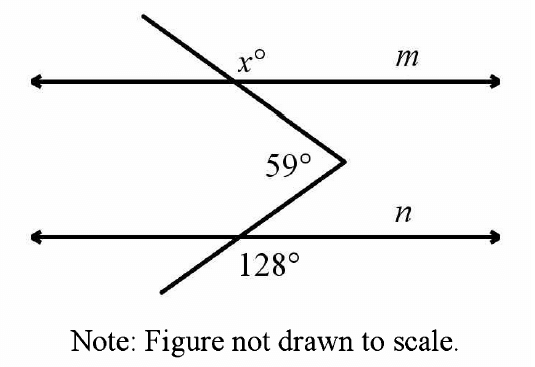WRITE A LINEAR INEQUALITY WORD PROBLEMS
To write a linear inequality from word problems, first we have to understand the information given in the question clearly.
Use an inequality to model and solve the following problems
Problem 1 :
Find all pairs of consecutive odd positive integers, both of which are smaller than 18, such that their sum is more than 20.
Solution :
Let "x" be the smaller of the two consecutive odd positive integers. Then, the other odd integer is "x+2"
It is given that both the integers are smaller than 18 and their sum is more than 20.
Hence, x + 2 < 18 -------(1)
and x + (x + 2) > 20 -------(2)
From (1)
x + 2 < 18
Subtract 2 on both sides
x + 2 - 2 < 18- 2
x < 16
From (2)
x + (x + 2) > 20
2x + 2 > 20
Subtract 2 on both sides
2x + 2 - 2 > 20- 2
2x > 18
Divide by 2 on both sides
2x/2 > 18/2
x > 9
From this we come to know that the required two numbers are between 9 and 16.We should not take 9 and 16.
x = 11, 13, 15
So, the required pairs of odd integers are
(11, 13) ,(13, 15) and (15, 17)
Problem 2 :
Find all pairs of consecutive even positive integers, both of which are larger than 8, such that their sum is less than 25.
Solution :
Let "x" be the smaller of the two consecutive even positive integers. Then, the other odd integer is "x + 2"
It is given that both the integer are larger than 8 and their sum is less than 25.
So,
x > 8 -------(1)
x + x + 2 < 25 --------(2)
From (1)
x > 8
Form (2)
2 x + 2 < 25
Subtract 2 on both sides
2x + 2 - 2 < 25 - 2
2x < 23
Divide by 2 on both sides, we get
2x/2 < 23/2
x < 23/2
From this we come to know that the required numbers are between 8 and 12.5.We should not take 8 and 12.5.
x = 10
So, the required pair is
(10, 12)
Problem 3 :
In the first four papers each of 100 marks, John got 95, 72, 73, 83 marks. If he wants an average of greater than or equal to 75 marks and less than 80 marks, find the range of marks he should score in the fifth paper.
Solution :
John scores x marks in the fifth paper. Then,
75 ≤ [(95 + 72 + 73 + 83 + x)/5] < 80
75 ≤ (323 + x)/5 < 80
Multiply by 5
75(5) ≤ (323 + x) < 80(5)
375 ≤ (323 + x) < 400
Subtract 323
375 - 323 ≤ (323 + x - 323) < 400 - 323
52 ≤ x < 77
So, John must score between 52 and 77 marks.
Problem 4 :
A man wants to cut three lengths from a single piece of board of length 91 cm. The second length is to be 3 cm longer than the shortest and third length is to be twice as the shortest. What are the possible lengths for the shortest board if third piece is to be at least 5 cm longer than the second ?
Solution :
Let the length of the shortest piece be x cm, Then the lengths of the second and third piece are x + 3 and 2x cm respectively.
x + (x + 3) + 2x ≤ 91 -----(1)
and 2x ≥ (x + 3) + 5 -----(2)
From (1)
2x + 3 + 2x ≤ 91
4x + 3 ≤ 91
Subtract 3 on both sides
4x + 3 - 3 ≤ 91 - 3
4x ≤ 88
Divide by 4 on both sides
(4x)/4 ≤ 88/4
x ≤ 22
From (2)
2x ≥ (x + 3) + 5
2x ≥ x + 8
Subtract x on both ides
2x - x ≥ x - x + 8
x ≥ 8
8 ≤ x ≤ 22
So, the shortest piece must be at least 8 cm long but not more than 22 cm long.
Kindly mail your feedback to v4formath@gmail.com
We always appreciate your feedback.
©All rights reserved. onlinemath4all.com
Recent Articles
-
Digital SAT Math Problems and Solutions (Part - 143)
Apr 13, 25 12:01 PM
Digital SAT Math Problems and Solutions (Part - 143) -
Quadratic Equation Problems with Solutions
Apr 12, 25 08:21 PM
Quadratic Equation Problems with Solutions -
Digital SAT Math Problems and Solutions (Part - 142)
Apr 11, 25 06:26 PM
Digital SAT Math Problems and Solutions (Part - 142)

